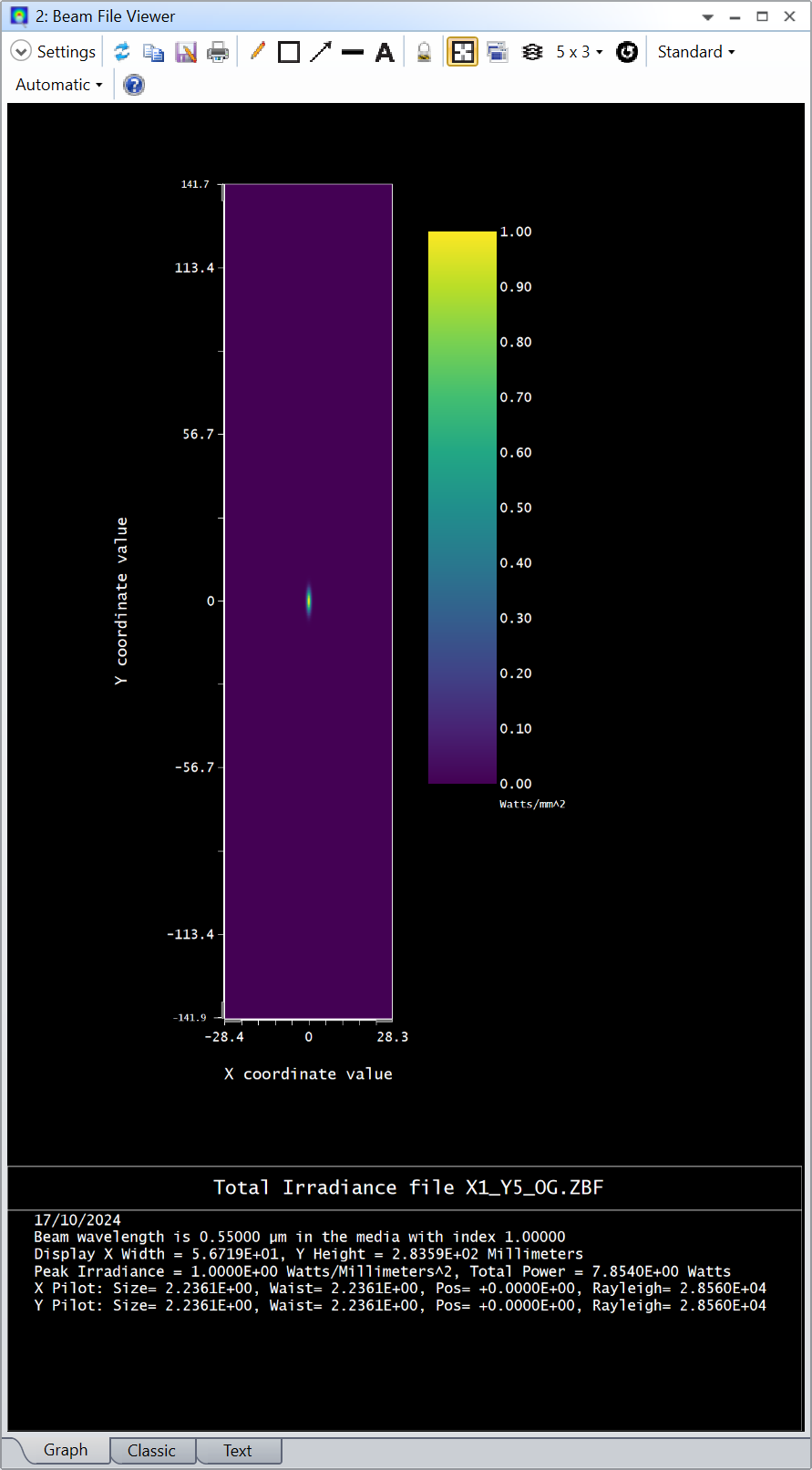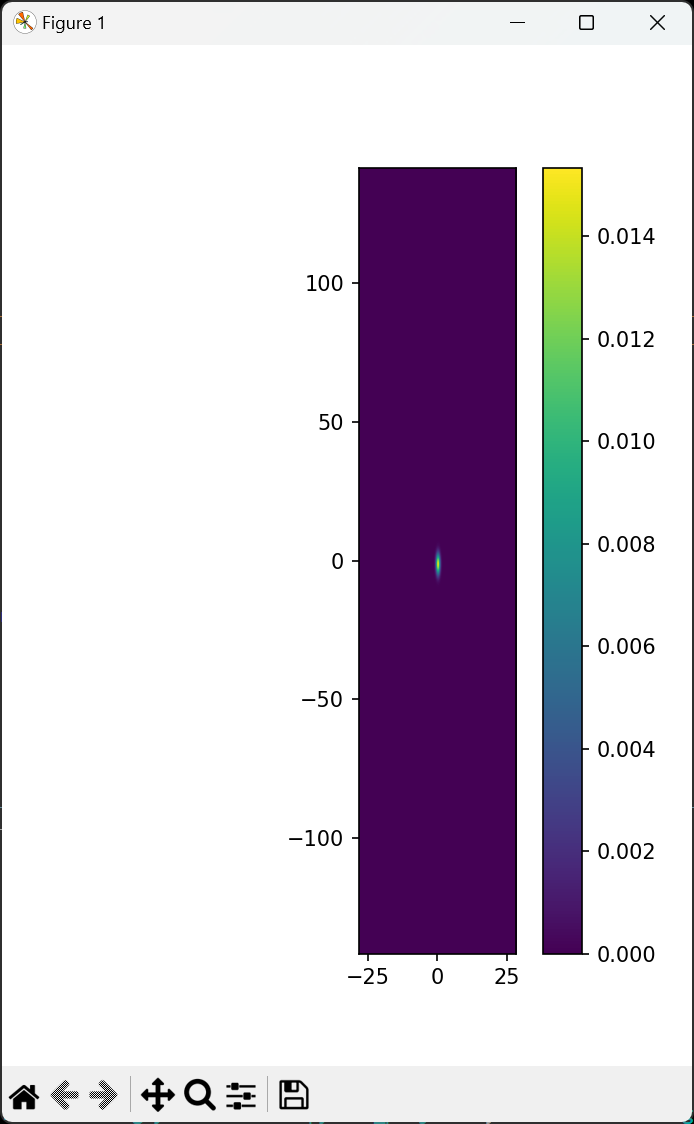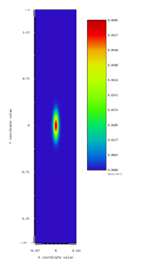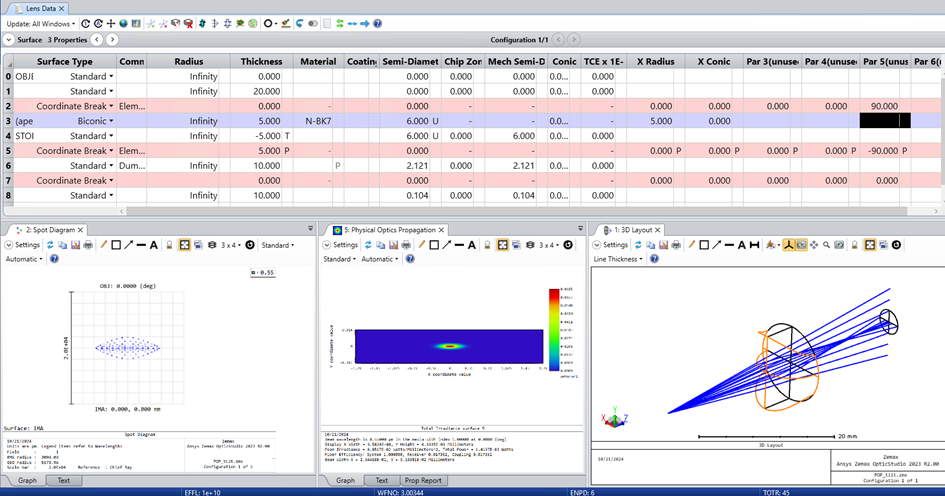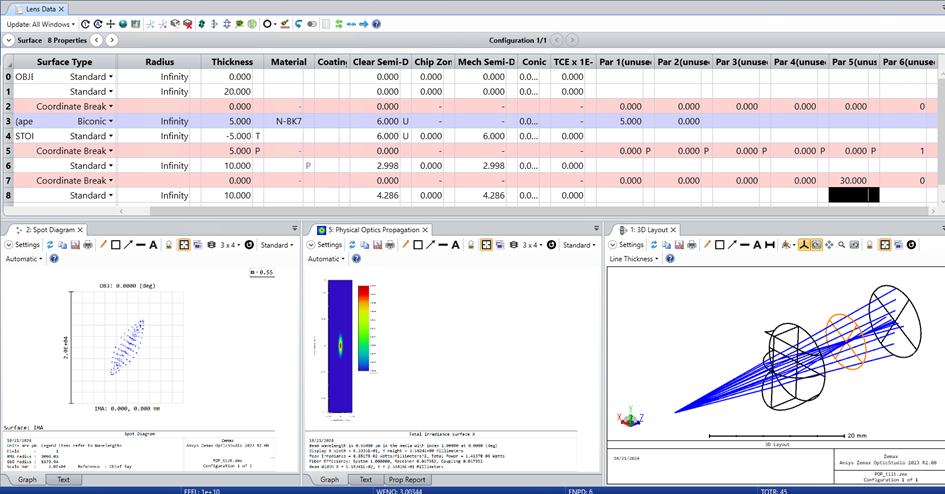Hi Everyone,
I would like to ask how to use zbftilt? The help document reads a bit confusing:
This keyword requires the name of the ZBF file and four numbers. The phase of the beam is modified by a phase angle given by θ = ( x – cx )tx + ( y – cy )ty . The cx and cy values are the center of the phase tilt, and tx and ty are the slopes of the tilt in units of radians per lens unit length. The coordinates x and y refer to positions within the beam file, with the center coordinate (x = 0, y = 0) being at the point (nx/2 + 1, ny/2 + 1) where nx and ny are the number of points in the x and y directions. The length units in the ZBF file are converted automatically to the current lens units. The resulting data is written back to the same file name.
If I want to rotate an elliptical beam mode by 90°, how should I write it?
Thanks!
Di



